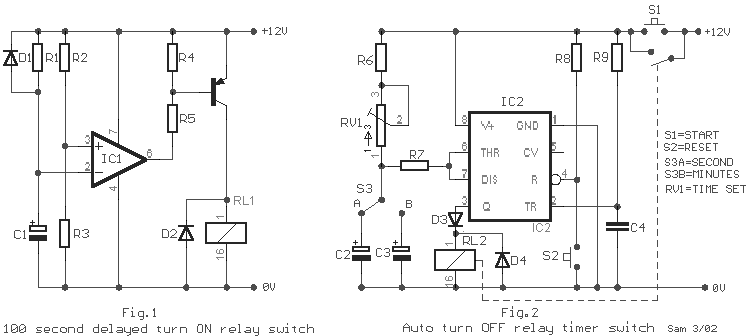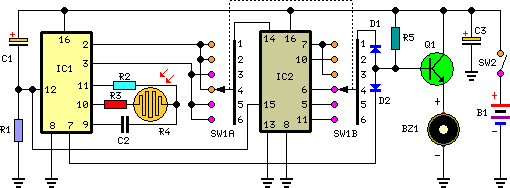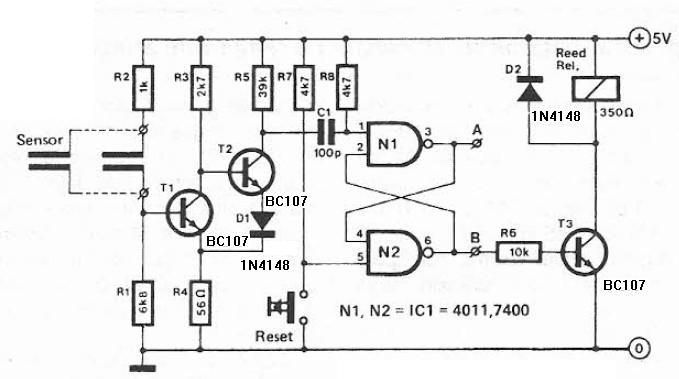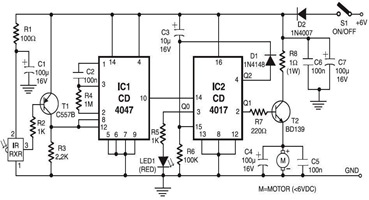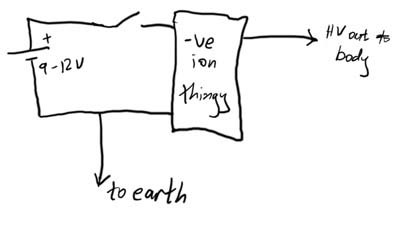
Digital Thermometer Circuit

The PIC16F84A digital thermometer circuit is constructed primarily using a temperature sensor along with various discrete components.
The PIC16F84A microcontroller serves as the core processing unit of the digital thermometer circuit. It is equipped with an 8-bit architecture and supports a range of peripherals, making it suitable for various applications, including temperature measurement. The circuit typically incorporates a temperature sensor, such as an LM35 or a thermistor, which converts temperature variations into corresponding electrical signals.
In this configuration, the temperature sensor outputs an analog voltage that is proportional to the ambient temperature. This analog signal is then fed into one of the analog-to-digital converter (ADC) channels of the PIC16F84A. The microcontroller processes this signal, converting it into a digital value that represents the temperature in degrees Celsius or Fahrenheit.
Additional components in the circuit may include resistors, capacitors, and possibly an operational amplifier to condition the sensor's output signal for optimal ADC performance. A display unit, such as a 7-segment LED display or an LCD, is often incorporated to visually present the temperature readings. The microcontroller controls the display, refreshing it at regular intervals to provide real-time temperature data.
Power supply considerations are also crucial; the circuit typically operates on a regulated voltage source, often 5V, to ensure stable performance. Proper decoupling capacitors should be placed near the power pins of the microcontroller to filter out noise and maintain a reliable operation.
Overall, the PIC16F84A digital thermometer circuit represents an efficient and effective approach to temperature measurement, leveraging the capabilities of the microcontroller and discrete components to deliver accurate readings.PIC16F84A Digital Thermometer Circuit The digital thermometer circuit is built, almost all by using the temperature sensor of some form of discrete components,. 🔗 External reference
The PIC16F84A microcontroller serves as the core processing unit of the digital thermometer circuit. It is equipped with an 8-bit architecture and supports a range of peripherals, making it suitable for various applications, including temperature measurement. The circuit typically incorporates a temperature sensor, such as an LM35 or a thermistor, which converts temperature variations into corresponding electrical signals.
In this configuration, the temperature sensor outputs an analog voltage that is proportional to the ambient temperature. This analog signal is then fed into one of the analog-to-digital converter (ADC) channels of the PIC16F84A. The microcontroller processes this signal, converting it into a digital value that represents the temperature in degrees Celsius or Fahrenheit.
Additional components in the circuit may include resistors, capacitors, and possibly an operational amplifier to condition the sensor's output signal for optimal ADC performance. A display unit, such as a 7-segment LED display or an LCD, is often incorporated to visually present the temperature readings. The microcontroller controls the display, refreshing it at regular intervals to provide real-time temperature data.
Power supply considerations are also crucial; the circuit typically operates on a regulated voltage source, often 5V, to ensure stable performance. Proper decoupling capacitors should be placed near the power pins of the microcontroller to filter out noise and maintain a reliable operation.
Overall, the PIC16F84A digital thermometer circuit represents an efficient and effective approach to temperature measurement, leveraging the capabilities of the microcontroller and discrete components to deliver accurate readings.PIC16F84A Digital Thermometer Circuit The digital thermometer circuit is built, almost all by using the temperature sensor of some form of discrete components,. 🔗 External reference
